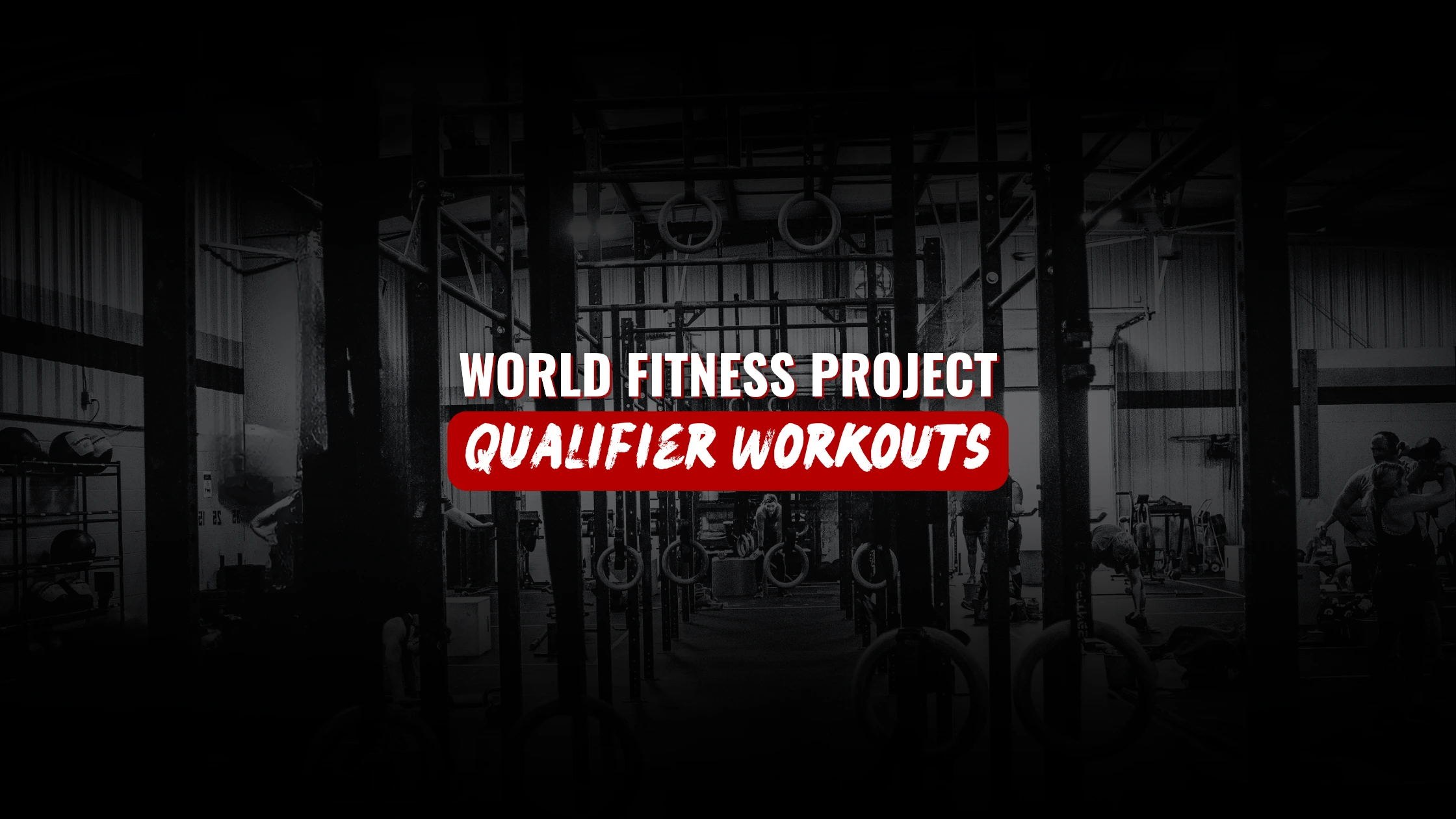WFP Challenger Qualifier 2 Workouts are now available for athletes facing a rapidly approaching deadline. Competitors have until Tuesday, July 8, at 9pm Eastern Time to submit scores for the three challenging workouts. Currently, 40 men and 42 women have registered for this round of qualifiers.
Additionally, the stakes are high for the WFP Challenger Qualifier 2 as only the top 9 men and women will earn spots to compete in the Pro division at Tour Stop 2 in Mesa, Arizona, scheduled for the last weekend in August. The next 20 athletes (those placing 10th-29th) will qualify for the Challenger division. This represents a significant opportunity, especially considering that 332 men and 163 women registered for the previous Challenger Qualifier 1.
Meanwhile, athletes who have already earned recognition include Colten Mertens and Fee Saghafi, the top Challenger athletes at Tour Stop 1, who received automatic invites to the Pro division for Tour Stop 2. The three workouts for this qualifier feature a combination of rowing, GHD sit-ups, dumbbell movements, Olympic lifts, rope climbs, and more. With such diverse and demanding challenges, competitors will need to demonstrate well-rounded fitness abilities to secure their qualification spots.
WFP Challenger Qualifier 2: Workout 1
The first challenge of the WFP Challenger Qualifier 2 presents athletes with a demanding pyramid-style chipper workout. Structured as a “for time” event, Workout 1 begins and ends with rowing, creating a symmetrical test of endurance and strength.
Competitors start with a calorie row (50 for men, 35 for women), subsequently moving to 50 GHD sit-ups. Following this initial test of midline strength, athletes must complete 50 single dumbbell box step-overs using a 20-inch box. Men will work with a 70-pound dumbbell while women will use a 50-pound implement.
At the midpoint of the workout, participants face 50 alternating hang dumbbell clean and jerks, which serves as both the centerpiece and tiebreaker point of the challenge. After completing this technical barbell movement, athletes must reverse course through the remaining movements – 50 more single dumbbell box step-overs, another set of 50 GHD sit-ups, and a final calorie row (50/35) to finish.
The entire workout operates under a 20-minute time cap. Furthermore, organizers have implemented a tiebreaker at the completion of the 50 hang dumbbell clean and jerks, recognizing this as a critical point in the workout’s progression.
According to insights from workout designers, this challenge specifically targets the midline, keeping athletes under tension throughout the entire workout. They note that competitors might be able to “hold the throttle down longer than you think” and potentially “come out hotter on that first row”.
The workout designers expect completion times between 15-17 minutes for top performers, with the final row becoming particularly challenging. Unlike more cyclical pieces, this workout introduces higher skill elements and multiple implements, creating a comprehensive test. Notably, this marks the introduction of GHD sit-ups, dumbbell step-overs, and hang dumbbell clean and jerks into the qualifier setting, adding new movement patterns to the season’s roster.
WFP Challenger Qualifier 2: Workout 2
Workout 2 of the WFP Challenger Qualifier 2 challenges athletes with a high-intensity 9-minute AMRAP featuring a combination of gymnastics, weightlifting, and cardio elements. The structure requires competitors to complete as many rounds as possible of three distinct movements within the allotted timeframe.
Each round consists of nine bar-facing burpees, six snatches at 83 kilograms for men or 56 kilograms for women, and three rope climbs to a height of 4.6 meters. For proper execution, the burpees demand that both chest and thighs touch the ground before the athlete proceeds over the bar. This standard aims to address previous concerns about movement efficiency seen in the first qualifier.
The workout designers implemented a tiebreak at the completion of the third round to differentiate athletes with identical scores. This strategic addition becomes increasingly important as fatigue sets in during later rounds.
Performance expectations for this workout indicate that completing rounds in approximately 90 seconds would demonstrate impressive capability. Nevertheless, the workout was deliberately designed as a “pull limiter,” meaning athletes will experience progressive fatigue in their pulling muscles. Consequently, the barbell will feel increasingly heavy as rounds accumulate.
Experienced coaches anticipate that few athletes will be able to touch-and-go the barbell consistently throughout the workout. Moreover, while athletes may begin with power snatches, the mounting fatigue might force them to transition to squat snatches in later rounds as their pulling strength diminishes.
The WFP Challenger Qualifier 2: Workout 2 introduces three new movements not featured in the first qualifier. This diversity tests athletes’ adaptability and skill across multiple fitness domains. The combination of bar-facing burpees, moderately heavy snatches, and rope climbs ensures a comprehensive assessment of an athlete’s fitness profile within a concentrated time domain.
This second workout continues the WFP’s pattern of creating varied challenges across different time domains and movement patterns, thereby testing athletes’ overall fitness capacity rather than specialized skills in isolated areas.
WFP Challenger Qualifier 2: Workout 3
The final test in the WFP Challenger Qualifier 2 series features a fast-paced pyramid chipper format designed to push athletes to maintain high intensity throughout the entire workout. Structured as a “For Time” challenge, Workout 3 combines barbell movements with gymnastics and short bursts of cardio.
Initially, athletes must complete 21 thrusters at 135 pounds for men and 95 pounds for women (equivalent to 61 and 43 kilograms respectively). After completing this opening barbell sequence, competitors advance to 14 shuttle runs, with each run covering 25 feet (7.6 meters). Next, the workout intensifies with 42 chest-to-bar pull-ups, testing upper body strength and endurance. Upon finishing the gymnastics component, athletes return to 14 more shuttle runs before tackling the final set of 21 thrusters to complete the workout.
The entire challenge operates under a strict 6-minute time cap. In addition, a tiebreak has been established at the completion of the 42 chest-to-bar pull-ups to differentiate athletes with identical scores.
As indicated by workout designers, this challenge is fundamentally about maintaining cadence on the thrusters and maximizing speed during shuttle runs. Indeed, top performers are expected to finish in the mid-3 minute range, highlighting the intensity of this brief but demanding test.
Strategy insights from coaches who tested the workout suggest that most elite athletes should aim to complete the chest-to-bar pull-ups unbroken. Certainly, maintaining momentum throughout is crucial, as even minor breaks or video review penalties could significantly impact final standings given the workout’s short duration.
In essence, this final qualifier workout rewards athletes who can “keep the throttle down” throughout, particularly on the second set of thrusters when fatigue begins to set in. The combination of moderate-weight barbell cycling, bodyweight gymnastics, and short sprints creates a comprehensive test within an abbreviated time domain.
Final Words
The World Fitness Project has quickly established itself as a legitimate force in competitive fitness. Despite being a new addition to the fitness competition landscape, the WFP has exceeded expectations with its inaugural events. The organization’s motto—”For athletes, by athletes”—appears to be more than just marketing, as competitors across both Pro and Challenger divisions report being treated with professional respect.
What sets the WFP apart is its production quality. Spectators have been impressed by dramatic spotlights, personalized athlete entrances through smoke onto the competition floor, and fan activations. Likewise, behind-the-scenes footage from the Buttery Bros has highlighted the camaraderie among competitors. The event’s credibility has been further bolstered by partnerships with major sponsors including Adidas and Red Bull.
Although still evolving, the WFP offers a valuable alternative in the competitive fitness scene with its season-long structure. Hence, qualifying for both Tour Events through these challenging workouts becomes crucial for athletes aiming for the World Fitness Finals. Those who successfully qualify for the Pro Division in both Tour Events are essentially guaranteed a spot in the top 30 heading into the Finals.
The WFP format blends remote qualifiers with live events, offering flexibility throughout the season. Presently, it serves as a supplement rather than a substitute to existing competitions such as CrossFit. Many top competitors, including some CrossFit Games veterans currently inside the top 10 of qualifier rankings, are actively participating in both ecosystems.
For those still considering participation, registration remains open at a cost of $25 USD. The emergence of WFP provides another avenue for athletes to test their fitness and gain valuable competition experience across varied formats. Throughout its development, the WFP continues to demonstrate its commitment to providing high-quality competition opportunities for athletes at different levels.
WFP Challenger Qualifier 2: Whats Next?
Following the WFP Challenger Qualifier 2, successful athletes will advance to several major events in the 2025 World Fitness Project calendar. Athletes who have completed their submissions by July 8 at 9pm Eastern Time will soon discover if they’ve secured a coveted spot in the upcoming competitions.
Tour Event II represents the next significant milestone, scheduled for August 29-31 in Mesa, Arizona. For athletes who performed exceptionally well in the qualifier, this presents an opportunity to showcase their abilities at a higher level. The top 9 men and women from Challenger Qualifier 2 will earn spots directly in the Pro division, whereas competitors placing 10th through 29th will qualify for the Challenger division.
The competitive journey extends beyond Tour Event II. Throughout October (specifically October 6-26), athletes will have another opportunity through the World Fitness Trials. This three-week online competition features six workouts released over the period, with two workouts per week. The Trials serve as the final qualifying opportunity for the year-end championship event.
Eventually, the season culminates with the World Fitness Finals in Copenhagen, Denmark, from December 18-21. Qualification for the Finals can be obtained through:
- A top 3 placement at Tour Event I or II
- Qualifying through the World Fitness Trials
- Earning sufficient points throughout the season
Simultaneously, the top 10 Challenger athletes based on points accumulated through Tour Events I and II will qualify for the Pro division at the Finals. This progression pathway potentially leads to securing a professional contract for the 2026 season.
For those interested in registering for future WFP events, the organization maintains different fee structures based on division. Throughout the season, Pro and Challenger divisions have no registration fees, whereas Teams require USD 100-250 per team member, and Duos cost USD 250 per person.

